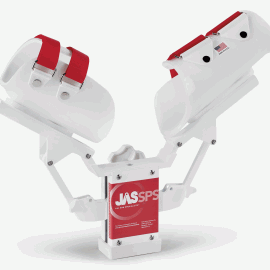Static Progressive Splinting
Using a static progressive splint, the joint is brought to a pain-free stretched position and held there for several minutes, to allow for the surrounding tissues to relax and lengthen. This stretching technique safely and efficiently restores normal length to shortened tissues surrounding a joint, allowing for motion and use when stiffness develops after injury.
Dynamic Splinting
Dynamic splints use a tension spring that is integrated into a brace. The spring provides mild, long duration stress on the restricted joint to facilitate tissue remodeling. The tension spring can be adjusted for more or less tension to achieve range of motion goals with less pain.





